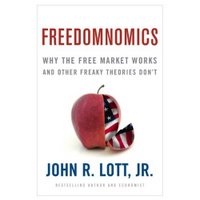People are beginning to notice what research has shown for years: Multiple-victim public shootings keep occurring in places where guns are already banned. Forty states have broad right-to-carry laws, but even within these states it is the "gun-free zones," not other public places, where the attacks happen. It is high time that legislatures remove these roadblocks to people protecting themselves, including at public universities.
Whether it is Virginia Tech or other deadly attacks — Columbine High School, where 13 were shot dead by two students in 1999; Luby's Cafeteria in Killeen, Texas, where 23 were fatally shot by a deranged man in 1991; or a McDonald's in Southern California, where 21 people were shot dead by an unemployed security guard in 1984 — they happened in gun-free zones. (Many older shootings, such as the one at Luby's, occurred before states began issuing permits for concealed handguns.)
In recent years, similar attacks have occurred across the world, including Australia, France, Germany and Britain. Do all these countries lack enough gun-control laws? Hardly. The reverse is more accurate.
The law-abiding, not criminals, are obeying the rules. Disarming the victims simply means that the killers have less to fear. As last week's attack demonstrated, police can't always be there: Unarmed students and faculty met the killer before police could arrive.
Most people understand guns deter criminals. If a killer were stalking your family, would you feel safer putting a sign out front announcing, "This Home is a Gun-Free Zone"? That is what schools do.
Unfortunately, public schools don't even have the same incentives as private companies to make the correct decisions on protecting student safety. For one, they are generally immune from liability. Parents can't sue the school for the death of their children. Nor can injured students sue.
Fears of permit-holders endangering safety are misplaced. Permit-holders have been extremely law-abiding and well-behaved. For example, before 1995, few K-12 schools had prohibitions on permit-holders having guns, and there is no evidence that there was ever a single problem.
Good intentions don't stop killers; people with guns do.
*John Lott is the author of the forthcoming book, Freedomnomics and the Dean's visiting Professor at the State University of New York at Binghamton.
Sonya Jones is a lawyer

Article published Monday, April 23, 2007, at USA Today.
Bans don't deter killers: Look what happened at Columbine and Virginia Tech, both ‘gun-free zones’.
By John R. Lott, Jr.
|
Home
Johnlott.org
(description of book, downloadable data sets, and discussions of previous controversies)
Academic papers:
Social Science Research Network
Book Reviews:
For a list of book reviews on The Bias Against Guns, click here.
---------------------------------
Posts by topic
Fraudulent website pretending to be run by me
The Merced Pitchfork Killings and Vin Suprynowicz's quote
Mother Jones article
Links
Interview with National Review Online
Lyonette Louis-Jacques's page on Firearms Regulation Worldwide
The End of Myth: An Interview with Dr. John Lott
Some data not found at www.johnlott.org:
Updated Media Analysis of Appalachian Law School Attack
Since the first news search was done additional news stories have been
added to Nexis:
There are thus now 218 unique stories, and a total of 294 stories counting
duplicates (the stories in yellow were duplicates): Excel file for
general overview and specific stories. Explicit mentions of defensive gun use
increase from 2 to 3 now.
Journal of Legal Studies paper on spoiled ballots during the 2000 Presidential Election
|
